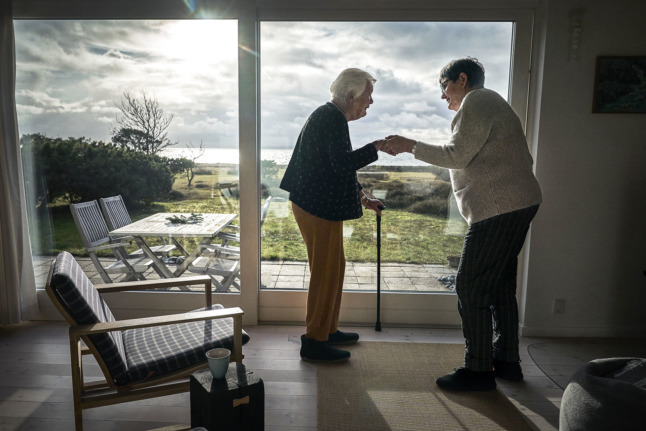What is the latest change?
The authority said in a press release on Wednesday that it was cutting the distance required to qualify as being “in close contact” with someone who has tested positive from two metres to one metre.
Previously, anyone who had been two metres from someone who tests positive for 15 minutes or more was required to self-isolate and get tested, so the change will mean a significant cut in the number of people forced to stay home and take tests, making it less likely schools and offices will detect outbreaks early.
In the new guidelines, those who have been in close contact with someone who has in turn been in close contact with someone who tests positive will also no longer need to take a Covid-19 test.
What other relaxations in controls have happened recently?
Last week, the authority dropped its recommendation that people should keep a distance of at least one metre, or in some cases two metres, from others when in public places, opening the way for cinemas, theatres, churches and a raft of other places where people gather to return to normality.
What’s happening to the infection rate?
The level of daily infections in Denmark seems to have broken through the upper limit of about 1,000 new cases a day, below which it has been hovering since the end of July, while the number of patients being treated for coronavirus in Denmark’s hospitals has now risen above 100 for the first time since the start of June.
What has happened to vaccinations?
There are still 1.4 million people in Denmark who have neither been fully vaccinated nor booked times for a dose, either because they are under 12 years of age, because they do not want to get vaccinated, or because they have not got around to booking a time. The number of daily doses being administered has fallen from above 50,000 a day at the peak in mid-June to below 5,000 today.
So why relax controls so much at the same time as infections are rising?
When announcing the various relaxations, Helene Probst, the agency’s vice director, has pointed to the high level of vaccination in Denmark, with about 75 percent of the adult population now fully vaccinated, which she argues means it is possible to safely return to near to normality.
“We have now reached a situation where we have good control of the infection in the community because so many people have accepted the offer to get vaccinated,” she has said.
This means, she argues, that prevention recommendations and contact tracing guidelines can be changed so that they are “a little less intrusive” and “you can all maintain a normal everyday life”.
What do the experts say?
Viggo Andreasen, associate professor at the Department of Science and the Environment at Roskilde University, told DR that he believed that rather than struggle to vaccinate the last hold-outs in society, it now made sense to allow the virus to spread and let them become immune through infection.
“We have come as far as we can with the help of vaccines. The vaccine rollout has more or less stopped, and the question is, what can be done to move forward with the coronavirus, so that we do not have to live with restrictions indefinitely?” he said.
He has calculated that if all restrictions are lifted, half of those who have yet to be vaccinated, either because they refuse the vaccine or because they are under the age of 12, would be immune through infection within six months.
“When you let the epidemic run, then they will get immunity the natural way, that is, by becoming infected. So really, the plan is that during the autumn here, a large portion of the unvaccinated will become infected and gain immunity that way, in which case the coronavirus pandemic will die out.”
Søren Riis Paludan, a virology professor at Aarhus University, told The Local that the government was no longer targeting infection rates.
“It depends on what you have as a focus: is it infection rates, hospitalizations, or death?” he said. “I guess in Denmark, the focus is very much shifted onto what is the burden on the health system, whereas before it was on the infection rate.”
He said that with hospitalisations now most common among people between the ages of 20 and 40 who have not got vaccinated, there was a sense in Denmark that the responsibility should now be placed on the individual to get vaccinated, rather than on society as a whole to keep the spread of infection low.
“Those are all people who could have got vaccinated if they wanted. So it’s not fair if those who don’t want to get a vaccine basically impose restrictions on the rest of us.”
What are the risks of loosening up restrictions, contact tracing and testing?
According to Paludan, the risks are fairly low.
“From the health point of view, there’s little risk so long as people get vaccinated, and so long as the most vulnerable people who got vaccinated early last year retain that immunity.”
He said the test would come in the winter when it was possible that people in elderly care homes, the first in Denmark to get vaccinated, might start to lose the immunity they had got from their vaccinations in January.
“I guess that is the big unknown here. Because I guess the big test is going to be when we approach winter.”

What happens if the most vulnerable in society start to become sick again?
If immunity is showing signs of wearing off among those vaccinated earliest, it is possible, he said, that Denmark could bring back some restrictions, although more likely that there would be a new campaign of vaccination.
“I would expect there to be either some rapid revaccinations or some restrictions.”



 Please whitelist us to continue reading.
Please whitelist us to continue reading.
Member comments